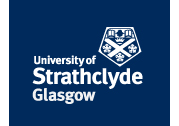Sampling Details
The annual New Democracies Barometer (NDB)
surveys are undertaken by established national institutes regularly conducting
nationwide representative sample surveys. In Vienna the Paul Lazarsfeld
Society co-ordinates two survey networks with Central and East European
affiliates, Fessel & GfK, and MITROPA and ASCII files are merged into
annual multi-national SPSS system files by the Centre for the Study of
Public Policy. In addition to using ten national languages for fieldwork,
there are two additional languages for co-ordination, English and German.
All interviews are face-to-face, since
limited telephone ownership means that phone interviews are not a representative
sample. The basic sampling procedure in each country follows ESOMAR principles
of a multi-stage, random probability sample, in which the population is
stratified regionally and within regions according to urban/rural divisions
and town size. One hundred or more primary sampling units (PSU) are drawn.
Within each PSU individual respondents are chosen on the basis of standard
random procedures, such as the Kish matrix or selecting the household member
next having a birthday. A proportion of interviews is subsequently verified
by the survey institute. For a full discussion of GfK sampling procedures
in the region, see the Annex of Central and Eastern Eurobarometer (Brussels: European Commission DG X, No. 9, March, 1996)
Each national survey is checked for representativeness
by gender, age, education, region and town size. Where appropriate, weights
are introduced to match the sample to the census. In no case do weights
produce major changes in the sample composition or responses. In some countries
samples routinely include respondents from age 15 upwards. Where this happens,
youthful respondents are excluded from the analysis; this reduces slightly
responses analyzed from the total of 52,940 interviews. All the data reported
here are for respondents age 18 and upwards. In Croatia, the war zone is
excluded from the sample.
NDB-I Autumn 1991
| Country |
Institute |
fieldwork |
N interviews |
| Bulgaria |
NAPOC Sofia |
December |
1002 |
| *Czechoslovakia |
GfK Prague |
November-December |
1034 |
| Hungary |
GfK Budapest |
November |
1019 |
| Poland |
Gfk Warsaw |
October |
1193 |
| Romania |
IRSOP Bucharest |
December |
1000 |
| Slovenia |
Sociology Institute U. Ljubljana |
Feb-March 1992 |
1049 |
| Austria |
IFES Vienna |
November |
1954 |
|
|
|
|
| Total interviews |
|
|
8251 |
|
|
|
|
| *A single
sample in what was then a singlestate; responses subdivided to report separate
Czech and Slovak responses here. |
NDB-II Winter 1992/93
| Country |
Institute |
fieldwork |
N interviews |
| Belarus |
Belarus Public Opinion Minsk |
23 Nov-1 Dec |
1225 |
| Bulgaria |
Balkan British Social SurveysSofia |
5-14 December |
1164 |
| Croatia |
CEMA/Mitropa Zagreb |
December |
1000 |
| Czech Rep |
GfK Prague |
Nov/March: 2waves* |
1408 |
| Slovakia |
GfK Prague |
Nov/March: 2waves* |
625 |
| Hungary |
GfK Budapest |
13-23 November |
970 |
| Poland |
GfK Warsaw |
21 Nov-5 December |
1113 |
| Romania |
IRSOP Bucharest |
December |
1000 |
| Slovenia |
Sociology Institute U. Ljubljana |
February |
1013 |
| Ukraine |
Ukrainian Academy of SciencesKiev |
Dec |
1000 |
| |
|
Total interviews |
10518 |
| *Two surveys were done
in the former Czechoslovakia, 10 Nov-7 Dec 1992, and 11 February-1 March
1993, following its break up. Since the data showed no significant changes
between waves, results are pooled for the Czech Republic and for the Slovak
Republic. |
NDB-III Winter 1993/94
| Country |
Institute |
fieldwork |
N interviews |
| Belarus |
Belarus Sociological Service |
23 Nov-1 December |
1000 |
| |
GfK Minsk |
5- 27 January |
1067 |
| Bulgaria |
Balkan British Social SurveysSofia |
5-14 December |
1139 |
| Croatia |
Mitropa Zagreb |
15 Jan-15February |
1000 |
| Czech Republic |
GfK Prague |
14-31 March |
1167 |
| Slovakia |
GfK Prague |
14-31 March |
574 |
| Hungary |
GfK Budapest |
19-29 November |
1060 |
| Poland |
GfK Warsaw |
26 Nov-3 December |
1057 |
| Romania |
IRSOP Bucharest |
13-19 January |
1000 |
| Slovenia |
Sociology Institute U. Ljubljana |
24 Mar-14 Apr |
1023 |
| Ukraine |
SOCIS Kiev |
5-27 January |
1000 |
| |
|
Total interviews |
11087 |
|
NDB-IV Autumn 1995
| Country |
Institute |
fieldwork |
N interviews |
| Belarus |
Sociological Service |
18-27November |
1000 |
| Bulgaria |
Balkan British Social Survey |
23-29 November |
1184 |
| Croatia |
Mitropa Zagreb |
13-27 November |
1000 |
| Czech Republic |
GfK Prague |
1-11 December |
978 |
| Hungary |
GfK Budapest |
20 Oct-8 November |
1067 |
| Poland |
GfK Warsaw |
25 Oct-7 November |
1057 |
| Romania |
GfK Romania |
1-11 December |
1038 |
| Slovakia |
GfK |
7-20 Nov and 30 Nov-18Dec |
1117 |
| Slovenia |
Sociology Institute U. Ljubljana |
1-31 Nov |
1000 |
| Ukraine |
SOCIS-Gallup Kiev |
30 Nov-8December |
1000 |
| |
|
Total interviews |
10441 |
| |
|
|
|
NDB-V Winter/Spring 1998
| Country |
Institute |
fieldwork |
N interviews |
| Belarus |
Socium Minsk |
4-28 February |
1000 |
| Bulgaria |
GfK Bulgaria Sofia |
16-30April |
1007 |
| Croatia |
Mitropa Zagreb |
17-31 March |
1000 |
| Czech Republic |
GfK Praha |
17-27 April |
1017 |
| Hungary |
GfK Hungaria Budapest |
27March-3 April |
1017 |
| Poland |
GfK Polonia Warsaw |
27 February-4March |
1141 |
| Romania |
CSOP Bucharest |
7-28 April |
1241 |
| Slovakia |
KMG Bratislava |
23 March-6April |
1011 |
| Slovenia |
PR + PM Maribor |
7-30 April |
1000 |
| Ukraine |
Socis-Gallup Kyiv |
30 March-8April |
1161 |
| F.R. Yugoslavia |
Argument Belgrade |
7-19 March |
1000 |
| Austria |
IFES Vienna |
28 Jan-23 February |
1048 |
| |
|
Total interviews |
12643 |
Conventions for reporting data
The Central and East Europe means are created
by weighting the total respondents of each country to 1000 cases, and then
dividing by the number of countries where a given question is asked, so
that each contributes an equal share to the overall mean figure. When a
question was not asked or not asked in a comparable format in a country,
it is omitted from the calculation of the NDB mean.


